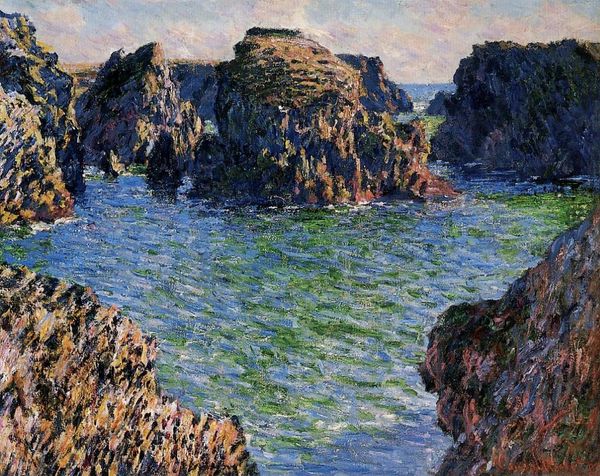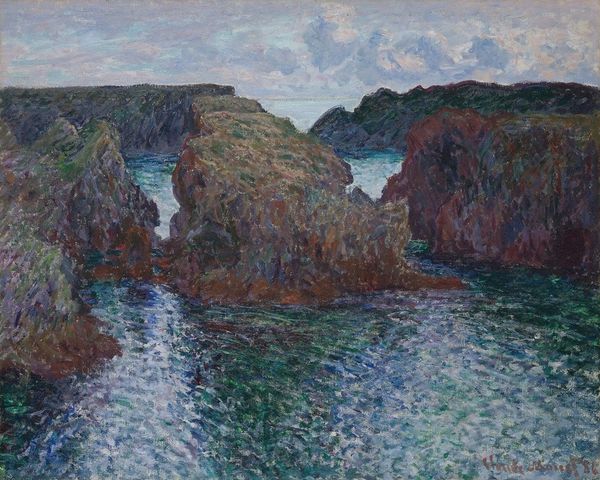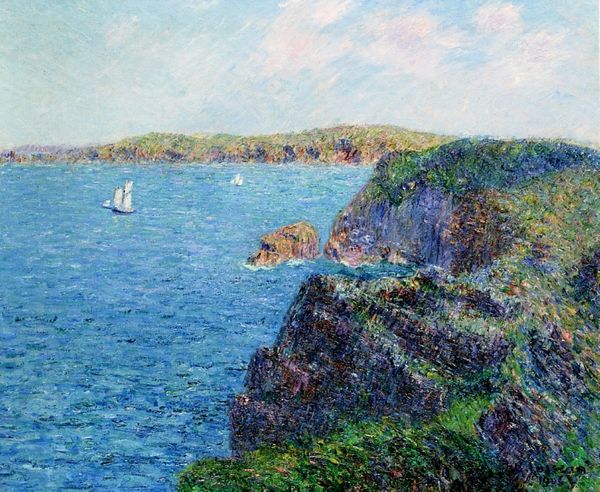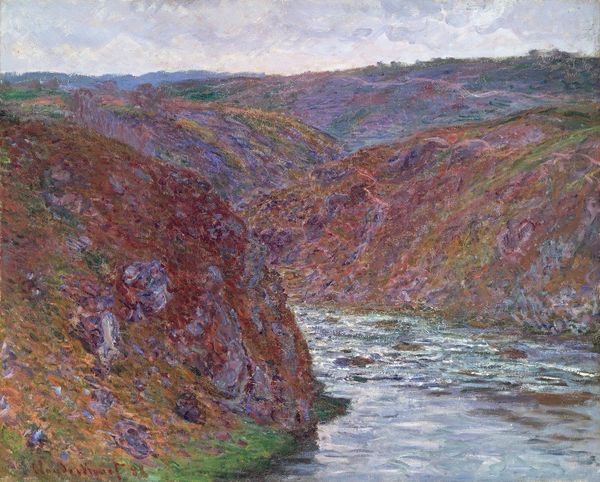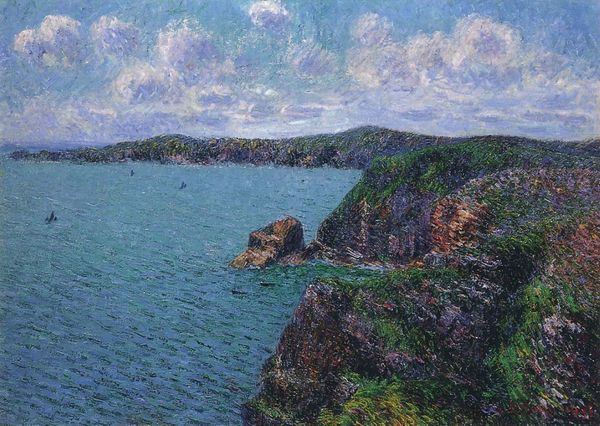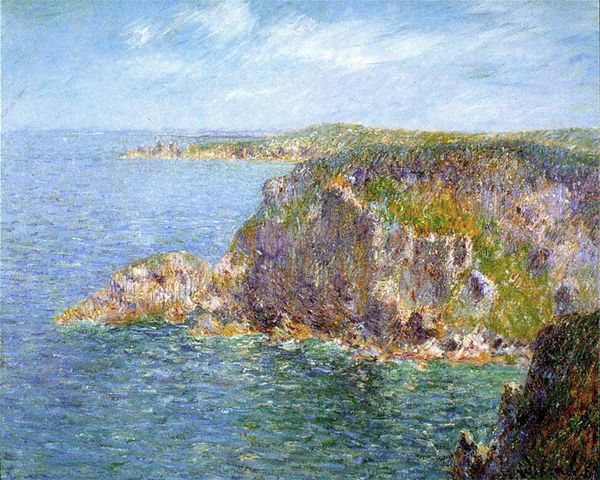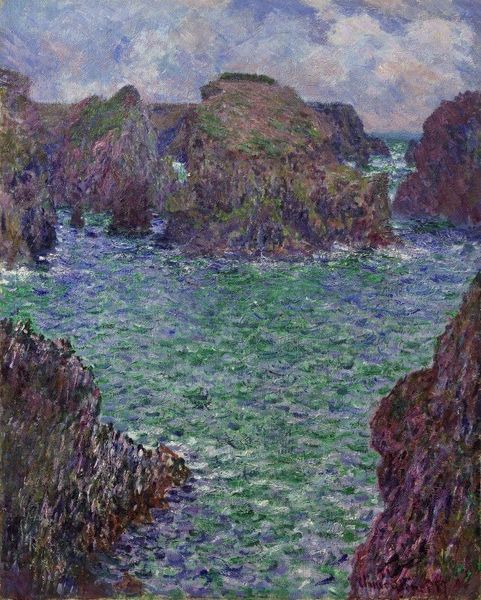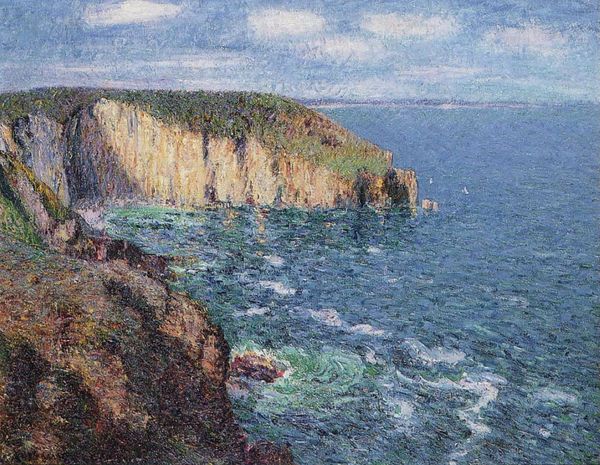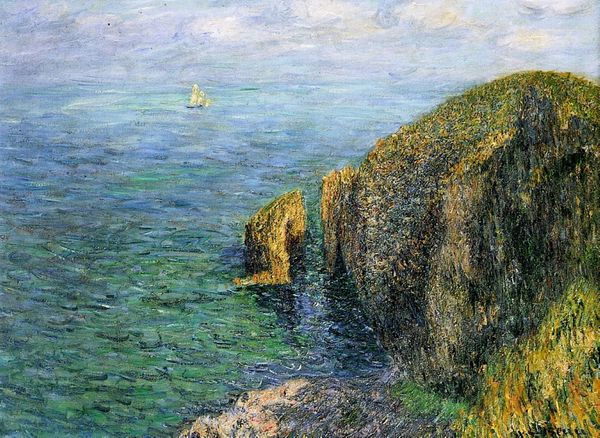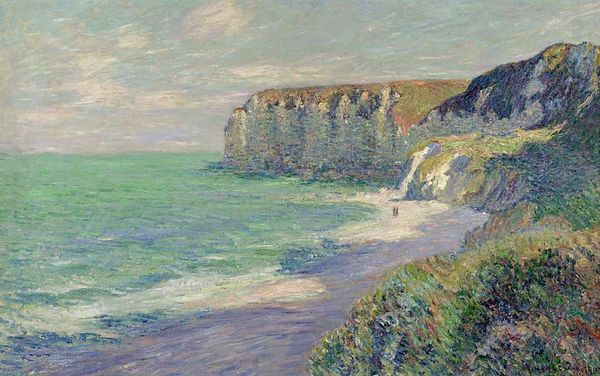
Copyright: Public Domain: Artvee
Curator: This is Claude Monet's "Port-Domois, Belle-Isle," painted in 1887. It captures the rugged coastline of Brittany. Editor: My first impression is of a powerful scene rendered with surprisingly gentle brushstrokes. The textures feel almost… woven. There’s something visually very interesting about the impasto. Curator: Monet’s fascination with light is obvious. Look how he uses short, broken strokes to capture the shifting play of light on the water and cliffs. It almost feels like you can smell the salt in the air. Editor: Indeed. The color palette, a dance of greens, blues, and earth tones, reinforces the raw yet serene mood. He's definitely pushing the boundaries of realism toward something more emotionally expressive. Semiotically, the turbulent sea may represent the formidable force of nature, something mankind can't tame. Curator: And those dramatic cliffs – they speak to the enduring strength of the earth, a symbol of resilience. Consider how the sea, a symbol of unconscious, meets the unyielding rock, representing a point of transformation and renewal, almost archetypal. Editor: The composition, too, draws the eye, almost relentlessly inward to that shadowed cove in the center. It invites contemplation. Are we about to discover something magical there? It’s not a comfortable space – quite wild. Curator: Belle-Isle became a haven for artists seeking unspoiled beauty, a refuge from the industrializing world. Monet, like many, sought solace in these landscapes, trying to find a connection to primordial forces of nature. There is almost a pre-verbal experience that gets tapped in these scenes. Editor: Absolutely. Monet has created an iconic impression not merely of place, but of feeling. The emotional impact of those colours in juxtaposition is lasting. Curator: A striking balance between representation and evocative interpretation; it prompts a feeling that ripples outwards, beyond the observable. Editor: Well, I think our perspectives have opened up the many aspects of this small landscape today. It is more multifaceted and profound than perhaps one first imagines.
Comments
No comments
Be the first to comment and join the conversation on the ultimate creative platform.

